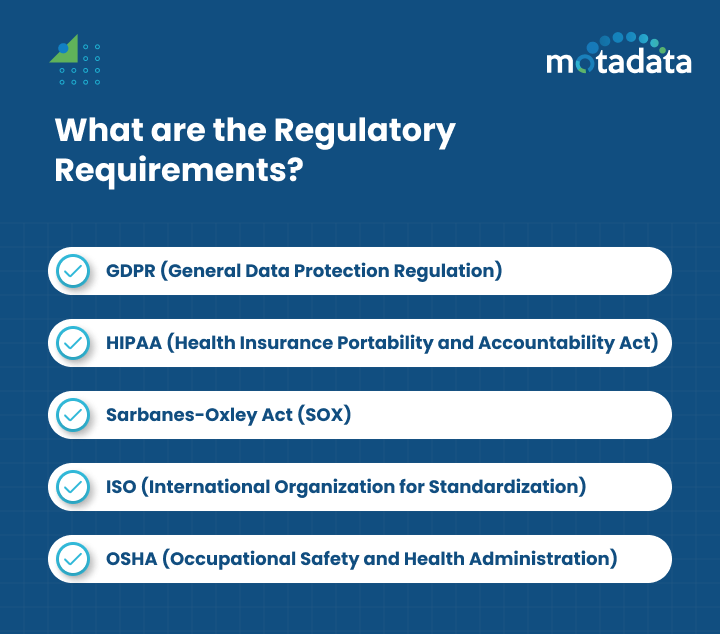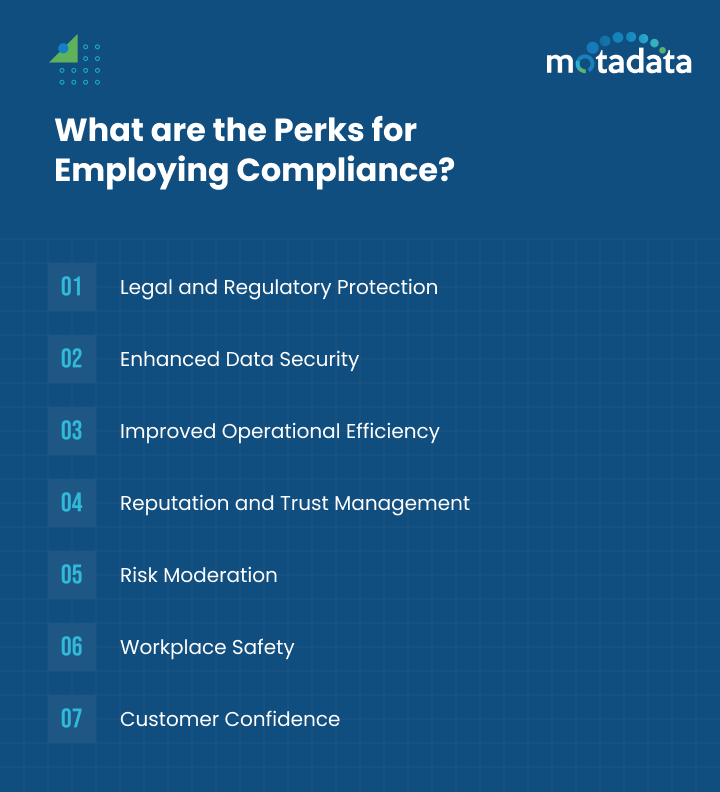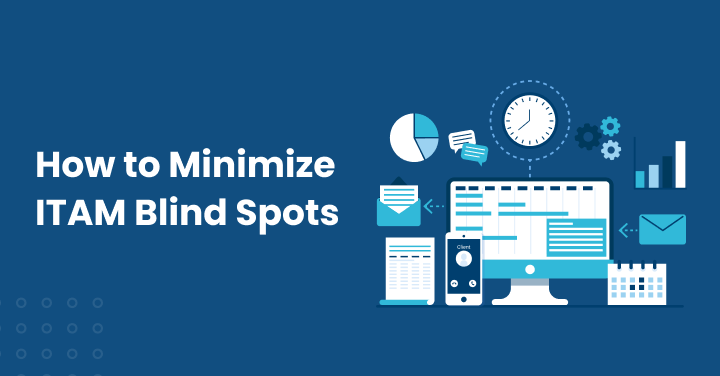In today’s ever-growing digital world managing IT assets smoothly is not an easy task. As organizations depend more on technology to execute their operations, the requirement for effective IT Asset Management (ITAM) has grown considerably. However, beyond merely managing these assets, ensuring compliance with relevant ITAM regulations and standards is essential. And, in this race of coping with the changing compliances, you are not alone. Many organizations are going through similar challenges.
Adhering to the compliance requirements in IT Asset Management, including maintaining a comprehensive IT asset inventory, protects an organization from legal and financial risks, boosting its operational efficiency and strengthening its reputation. In this blog, we will dive into compliance’s critical role in ITAM and its benefits to your organization.
Understanding Compliance in IT Asset Management
Compliance in IT Asset Management means following the legal, regulatory, and organizational guidelines to use, manage, and dispose of IT assets. These assets consist of hardware, software, non-IT, consumables, licenses, and other technology resources the business owns or uses. Ensuring compliance involves accurately tracking, documenting, and managing all IT assets in line with relevant laws, industry standards, and internal policies.
What are the Regulatory Requirements?
Now, is your IT Team wondering which regulations your business needs to comply with to boost credibility and streamline operations? No worries, here is a list of common regulations that are required to be complied with:
GDPR:
GDPR (General Data Protection Regulation), a comprehensive data protection law endorsed by the European Union (EU), came into effect on May 25, 2018. Its main goal is to protect citizens’ privacy and personal data within the EU. Additionally, it enforces strict control over personal data, inducing how IT assets that store or process such data are managed.
HIPPA:
HIPAA (Health Insurance Portability and Accountability Act), implemented in 1996, contains the laws and protocols to safeguard the privacy and security of health information in the United States (U.S.). The main aim of this act is to reduce the misuse of health-related info stored within the hospital systems. It oversees how healthcare organizations manage the IT assets containing Protected Health Information (PHI).
SOX:
The Sarbanes-Oxley Act (SOX) is a U.S. federal law protecting stakeholders from fraud scandals in private and public companies. The U.S. government introduced it in response to the high-profile corporate scandals that led to heavy financial and trust losses. Hence, the prime objective of this act is to enhance the accuracy and reliability of commercial disclosures, avoiding misleading accounting practices. It imposes strict controls over the financial bodies and the IT assets that support them.
ISO:
ISO (International Organization for Standardization) standards are crucial in guiding organizations to manage their IT assets effectively and ensure compliance with various protocols. For example, the ISO/IEC 19770 series provides frameworks and best practices to manage the entire IT asset lifecycle, including incident management, from procurement to disposal. These standards help organizations standardize processes, ensure proper tracking and licensing of software, and maintain compliance with internal policies and external regulations. By following these guidelines, organizations can optimize asset utilization, enhance security, and reduce risks associated with asset mismanagement and incidents in IT operations.
Read Also: IT Asset Lifecycle Management: Your Path to Ultimate Success
OSHA:
In IT Asset Management (ITAM), OSHA (Occupational Safety and Health Administration) compliance is important for ensuring that IT asset handling, storage, and disposal meet workplace safety standards. While OSHA primarily focuses on occupational safety and health, its guidelines impact ITAM by requiring safe practices in environments where IT equipment is used.
This includes managing electrical risks, ergonomic concerns, and the safe disposal of hazardous materials in some IT assets. By integrating OSHA compliance into ITAM processes, organizations can create safer work environments, minimize the risk of accidents, and ensure that all IT-related activities adhere to necessary safety regulations. And the list of compliances can go on. With each passing day, new ones arise, and coping with them is important. Following are the reasons why maintaining compliance with these regulations in IT Asset Management (ITAM) is crucial:
- Legal Protection: Adhering to these regulations helps organizations avoid legal penalties, fines, and sanctions arising from non-compliance. For example, failing to comply with GDPR or HIPAA can result in significant financial penalties and legal action.
- Data Security: Compliance ensures that sensitive data, such as personal, financial, or health information, is protected from unauthorized access, breaches, and misuse. This is particularly important under regulations like GDPR and HIPAA, which mandate stringent data protection measures.
- Operational Efficiency: Standards like ISO/IEC 19770 provide best practices for managing IT assets efficiently, reducing waste, and optimizing the use of resources. Compliance with these standards helps streamline ITAM processes, leading to better resource allocation and cost savings.
- Reputation Management: Compliance builds trust with customers, partners, and stakeholders by demonstrating that the organization follows best practices and legal requirements. A strong compliance record can enhance the organization’s reputation and credibility in the market.
- Workplace Safety: OSHA compliance in ITAM ensures that the management and disposal of IT assets are conducted safely, minimizing the risk of workplace injuries and creating a safer environment for employees.
- Risk Mitigation: Compliance helps identify and mitigate risks associated with IT asset management, such as data breaches, financial losses, and regulatory penalties. Organizations can proactively address potential issues by following established guidelines before they escalate.
Maintaining these compliances is essential for protecting the organization, its employees, and its customers while promoting efficient and secure management of IT assets.
What are the Perks for Employing Compliance?
Do you know the number of benefits that Asset Management compliance offers your organization? If not, go through the list below, which includes some major perks. They are:
1. Legal and Regulatory Protection:
Compliance helps organizations avoid legal consequences, such as fines and penalties, by ensuring adherence to laws and regulations like GDPR, HIPAA, and SOX. This protection extends to reducing the risk of lawsuits and regulatory investigations.
2. Enhanced Data Security:
By complying with standards and regulations, organizations can implement robust data protection measures, safeguarding sensitive information from breaches, unauthorized access, and other security threats.
3. Improved Operational Efficiency:
Compliance often involves adopting best practices for IT asset management, leading to streamlined processes, better resource allocation, and reduced operational costs. Standards like ISO/IEC 19770 help organizations manage IT assets more effectively.
4. Reputation and Trust Management:
Adhering to compliance standards builds trust with customers, partners, and stakeholders. Demonstrating a commitment to legal and ethical standards enhances an organization’s reputation, which can be a competitive advantage in the market.
5. Risk Moderation:
Compliance helps organizations identify and reduce potential risks, such as data breaches, operational inefficiencies, and regulatory penalties. By proactively addressing these risks, organizations can avoid costly disruptions.
6. Workplace Safety:
For IT assets, particularly in environments with physical equipment handling, OSHA compliance ensures a safer workplace by reducing the risk of accidents and injuries, contributing to a healthier work environment.
7. Customer Confidence:
When an organization complies, it can assure customers that their data is handled securely and responsibly. This confidence can lead to increased customer loyalty and potentially attract new business.
Achieving Compliance:
Are you in a dilemma regarding implementing policies, ensuring regulatory compliance, and reducing risks? The following approaches will strengthen your compliance framework and promote ethical and efficient asset management.
Build a Compliance Strategy
Create a complete compliance strategy that outlines the legal and regulatory requirements relevant to your organization. This strategy should include guidelines for hardware asset management, software asset management, licenses, and data in accordance with the applicable standards.
Implement Automated Tools
Leverage IT Asset Management software that includes compliance management features. These tools can automate the tracking and reporting of compliance status, helping organizations stay on top of the regulatory requirements and avoid manual errors.
Regular Audits and Assessments
Conduct audits and assessments of your IT assets to ensure compliance with established standards. These audits should be documented, and any discrepancies should be addressed promptly.
Training and Awareness
Ensure that all employees involved in IT Asset Management are trained on compliance requirements. Regular training sessions and awareness programs can help keep compliance at the forefront of people’s minds and reduce the risk of non-compliance due to human error.
Monitor Regulatory Changes
Regulations and standards governing IT Asset Management are constantly evolving day-by-day. Organizations must stay informed about these changes and adjust their compliance strategies accordingly. Apart from following the above strategies, you can also use several tools and technologies that can assist organizations in achieving and maintaining compliance in IT Asset Management (ITAM). Some of the key technologies that aid in compliance are:
IT Asset Management Software
IT Asset Management Software ensures compliance by centralizing the tracking and management of all IT assets, including hardware, software, non-IT, and consumables. It provides accurate documentation throughout the asset lifecycle, automates tasks like inventory management and audits, and reduces non-compliance risk. Integrating with other IT systems provides an exhaustive view of the entire IT environment, allowing for accurate asset tracking. This helps the organizations to address potential compliance issues while streamlining operations proactively.
Compliance Management Software
Compliance Management Software is vital for organizations seeking to streamline their adherence to regulatory requirements. This software automates the monitoring and managing of compliance-related tasks, making it easier to stay up-to-date with evolving regulations. It tracks compliance status across various areas, schedules audits, and generates detailed reports, providing clear insights into an organization’s regulatory standing.
By centralizing these processes, the software reduces the risk of oversight and ensures that all necessary compliance measures are consistently implemented. This helps avoid penalties and strengthens the organization’s ability to demonstrate regulatory adherence to stakeholders and auditors.
Audit and Reporting
Software with audit and reporting features is essential to maintain compliance by allowing organizations to perform regular audits and create in-depth reports. It provides detailed insights into IT asset management practices, helping to identify the potential compliance gaps or areas needing improvement. Automating the audit process with the help of workflows ensures accuracy and consistency, reducing the chances of human error.
Additionally, it simplifies the reporting process, making it easier to present compliance data to regulators, auditors, and stakeholders. Regular audit and reporting features help organizations take proactive measures, avoid regulatory penalties, and maintain a strong, clear compliance approach with software vendors.
License Management Solution:
License management tracks and manages software licenses, providing visibility into usage and ensuring that organizations do not exceed their licensing limits or violate terms. It helps prevent unauthorized software use by monitoring installations and ensuring all the software is properly licensed. The software license management feature also streamlines renewing and purchasing licenses, reducing administrative burden and potential for errors. By maintaining accurate records and managing licenses effectively, organizations can avoid costly penalties and ensure compliance with legal and contractual obligations.
Backup and Recovery Solutions:
Backup and Recovery Solutions are necessary to maintain compliance by ensuring data integrity and availability. These solutions create regular backups of critical data and systems, protecting against data loss due to breaches, failures, or other disruptions. They enable quick recovery of data, which is crucial for adhering to data protection regulations and minimizing operational downtime. Implementing these solutions allows organizations to protect their data, comply with regulatory requirements, and maintain business continuity during unexpected disruptions.
Data Encryption
Data Encryption Tools are critical in safeguarding sensitive information and ensuring compliance with data protection regulations like GDPR and HIPAA. These tools encrypt data, converting it into an unreadable format that can only be decoded with the correct decryption key. Thus, protecting it from unauthorized access.
Encryption can be applied to data at rest (stored data), in transit (data being transferred), and during backup processes, ensuring full security across all stages. By using encryption, organizations can protect personal and confidential information, reduce the risk of data breaches, and demonstrate compliance with strict regulatory requirements. Data encryption helps maintain trust with customers and stakeholders and mitigates the financial and reputational risks associated with potential data breaches.
Continuous Compliance Monitoring
Regular audits and reviews are essential practices to maintain accuracy and ensure compliance with IT asset management. With regular internal audits, organizations can keep an eye on the latest records that reflect the true state of their assets. These audits help to identify any discrepancies or errors in documentation at an initial stage, giving room for prompt corrective action. Moreover, scheduling periodic reviews helps to maintain unceasing compliance with regulatory requirements. These reviews provide a chance to evaluate the effectiveness of existing processes and make improvements accordingly. Regular audits and reviews boost operational transparency and reduce the risk of non-compliance.
Conclusion
Compliance in IT Asset Management is not just a legal obligation but a critical component of responsible and effective IT management. By following these compliance standards, organizations can protect their sensitive data, avoid legal penalties, enhance operational efficiency, and safeguard their reputation or goodwill. As the regulatory landscape evolves, staying compliant will remain a key priority for organizations looking to thrive in the digital age.
FAQs:
Compliance in Asset Management refers to the adherence to legal, regulatory, and internal standards that govern the management, use, and disposal of an organization’s assets.
This includes ensuring that all assets are properly recorded, tracked, and managed in line with applicable laws, industry protocols, and organizational policies.
The basic principles of asset management include:
- Alignment with Organizational Goals: Aligning asset management strategies with the overall goals and objectives of the organization to support business outcomes.
- Lifecycle Management: Managing assets from procurement to disposal, considering the entire lifecycle to optimize performance, cost, and risk.
- Risk Management: Identifying, assessing, and mitigating risks associated with asset ownership, operation, and disposal to minimize potential negative impacts.
- Sustainability: Incorporating environmental, social, and economic considerations into asset management practices to support long-term sustainability.
- Compliance and Governance: Ensuring that asset management practices comply with relevant laws, regulations, and internal policies, maintaining transparency and accountability.
- Continuous Improvement: Regularly reviewing and improving asset management practices to enhance performance, efficiency, and value over time.
Asset Management compliance is essential for businesses to avoid legal penalties, ensure efficient asset use, and maintain trust with stakeholders by demonstrating responsible and ethical operations.









